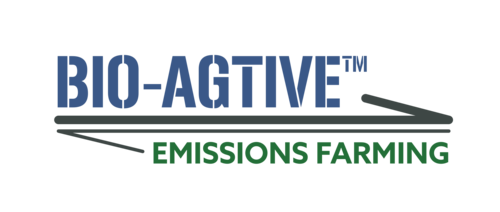Empowering Farmers to Rebuild their Soil Carbon Bank
The Bio-Agtive Method rapidly builds soil organic matter, but it also empowers you to gain free nitrogen for your farm to
eliminate costly inputs, notably synthetic nitrogen.
A diminished supply of ammonium in the soil signals to the plant that it needs to establish a relationship with the soil
microorganisms. No better way to do this than to photosynthesize more carbohydrates into the soil in order to feed the
hungry microbiome. In turn, these microbes are holding down a critically important role; biological nitrogen fixation.
Beyond the tank system that retrofits to process emissions from every tractor, sprayer or combine, the Method also
leverages a cultured biostimulant; Bio-Agtive Carbon Water. This proprietary product enhances natural microbial
culturing with the minerals from the soot. The stimulatory solution is then vaped back to the soil and plant canopy as a
superior delivery mechanism to optimize surface area coverage of tiny but effective and stimulatory crop inputs.
About Us
Based in Pincher Creek, Alberta, Bio-Agtive Emissions Farming is a Canadian innovation that recycles internal combustion emissions from any
fuel source into rich plant nutrition that is simultaneously returned to the crop environment from any mechanized agricultural equipment
passing over landscapes as a farmer seeds, sprays, or harvests. The technology is licensed to farmers who collaborate and practice the
Bio-Agtive Method to aggregate their offsets to sell on voluntary carbon markets.
Worldwide, the Bio-Agtive Method is allowing producers to leave behind conventional farm practices to the benefit of a regenerative approach
to enhance soil health, biologically grow nutritious food, and drawdown CO2 from the atmosphere.
Farming is the lifeline of many small and rural Canadian communities. If humanity is ever to succeed at climate mitigation and food security,
what Bio-Agtive is out to achieve is to re-ignite life in rural communities through farming, and with farmers engaging in the entire agri-food
value chain to create consumer food products that are net negative, nutritious, and restoring topsoil season after season. Experts have
warned that only 60+ harvests remain in the world if we stay on this present-day track, but emissions farming can rapidly scale to reverse this
trend and farmers will be rewarded for their ecoservice system management
History
Gary Lewis is a 4th generation farmer and the innovator behind this new way to farm. In the early 2000's, challenging farm economics forced him to think about how he could become more efficient on his family farm. In 2001, he conducted a first experiment to capture emissions from a natural gas motor that ran his irrigation system in order to return nitrogen from the combusted gas to the soil and plant canopy. Since that initial experiment, Gary and his family have worked tirelessly with farmers all over the world to produce the 6th generation of the technology for the upcoming 2024 season. This incredible piece of equipment is custom mounted to any farm machinery and implements to form the ultimate delivery system for powerful biological inputs that are delivered from tractors, sprayers and even combine-harvesters to empower farmers to work more efficiently, while adding resilience and value to the natural capital of their landscape.
